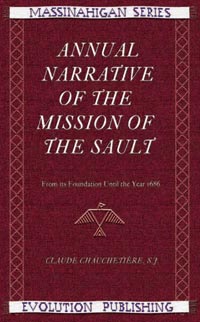17th And 18th Centuries - The North American Natives
Seventeenth-century witnesses, including the Jesuit Relations, tell of the interest natives showed in sacred chants and plainsong near towns and missions (Abenakis in Sillery), sometimes even in brotherhoods (Ste-Famille). These apostolic and musical activities maintained links with France, in particular with the Chapter of the Chartres Cathedral.
Some missionaries brought manuscripts to the new world; among them is a 590-page manuscript, deposited at the archdiocese of Quebec City, featuring the Abenaki language, Latin, and French (Noëls, hymns), plainsong, secular music (Noëls, hymns) or polyphony (fauxbourdons, motets). It comprises the best known hymns (Veni Creator, Pange Lingua, Te Deum, Salve Regina, etc.), litanies, lections from Tenebrae, psalm tones, and various High Solemn Masses: Messe de la Vierge, Messe des morts, a two-part Messe royale, etc. Yvon Thériaut (L'Apostolat missionnaire en Mauricie, 1951), located a similar manuscript at the Indian reservation of Odanak (St-François-du-Lac, near Sorel).
Several song handbooks, among them a Graduale romanum (Paris 1697) approved by Du Mont and Nivers, once the property of the Séminaire de Québec, show Abenaki words added with a pen (sections of masses for the feast days of the Assumption and the Purification).
Friday, August 26, 2005
Canadian Plainchant
The Canadian Encyclopedia has a very informative online article on plainchant in Canada which serves a good introduction to some of the typical forms chant took in New France and some of the main printed and manuscript sources. Here is the most relevant section:
Subscribe to:
Post Comments (Atom)




1 comment:
Il semble que vous soyez un expert dans ce domaine, vos remarques sont tres interessantes, merci.
- Daniel
Post a Comment